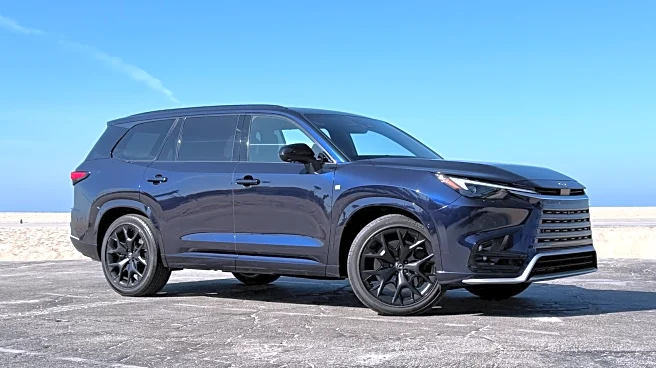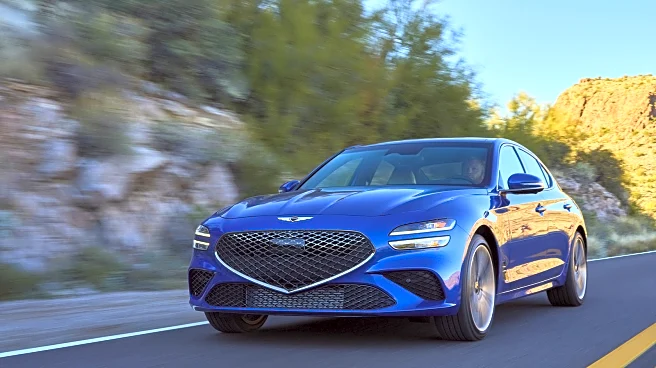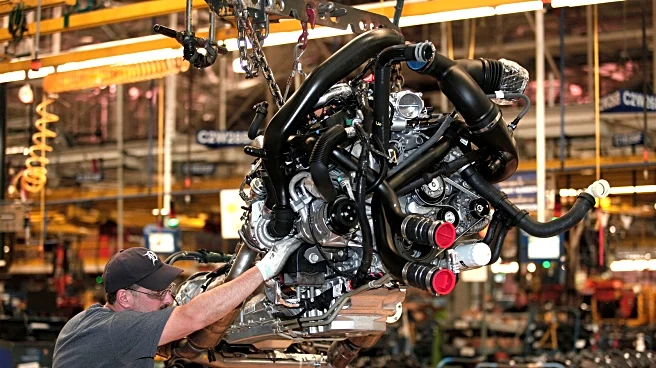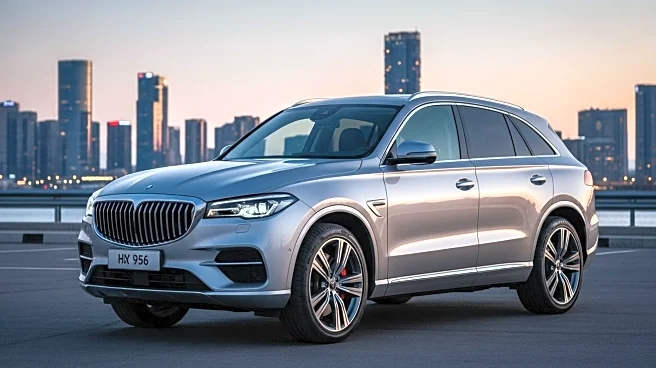
Lexus has a pretty robust lineup of SUVs these days. The sub-compact UX and the compact NX are strong choices for small, upscale vibes. Dominant ultra-luxury flagships like the LX sit at the top of its range, and in the middle of Lexus' lineup is the popular and long-lasting RX. Yes, that's a lot of X's, but Lexus wants to make sure it's covering all the SUV ground it can. Helping achieve that goal is the TX, which slots in between the RX and the LX in terms of both price and size.
From nose to tail,
the RX measures 192.5 inches long, or just over 16 feet. The TX rides on the same platform (Lexus calls it the GA-K platform), but it stretches that number out by almost a foot: it is 203.5 inches long. So, yes, the TX is bigger. It makes use of that extra space with a third row of seating, where the RX only has two rows. The 2026 Lexus RX 350 has a starting price of $50,575, but the extra row of seating in the 2026 TX 350 requires you to spend a bit more. The RX 350 has an MSRP of $57,090 (both prices include a $1,450 destination fee). The TX 350's base trim already includes a lot of luxury features for the money, but you can opt for higher trims for even more equipment. And, of course, there are a few hybrid powertrains to choose from if you so desire.
Read more: 10 Car Brands With The Nicest Interiors
Extra Money Gets You Lots Of Extra Features
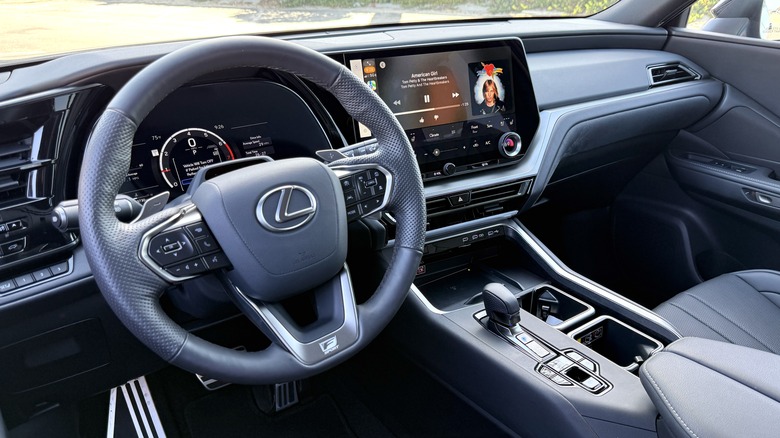
The Lexus TX 350 debuted in 2023 to replace the RX-L, and it offers all the charm and performance you've come to expect from the luxury brand. Standard features on the base model include heated front seats, Lexus' 12.3-inch infotainment display, a 12-speaker stereo, LED exterior lighting, and the Lexus Safety System+ 3.0. The Safety System+ 3.0 includes driver aids like adaptive cruise control, lane-keep assist, a proactive driving assist system that helps brake and steer through corners, and emergency braking. Lexus also offers an AWD version.
Aside from the standard trim, the TX 350 has another three trim levels: Premium, Luxury, and F Sport Handling. The F Sport handling is the most expensive of the bunch with an MSRP of $66,360 (including $1,450 destination), but it comes with some significant extras. Heated and ventilated seats are standard in the front row and the second row, and captain's chairs are fitted to all three rows, which makes getting in and out of the third row a bit easier. A panoramic sunroof and adaptive suspension are mixed in there as well, all making for a well-rounded luxury package. I recently had some seat time in the TX 350 F Sport Handling pictured here, and it was extremely comfortable, even if it was a bit lacking on the "sport" front. For that, I'd recommend going with one of the upgraded hybrid powertrains.
Powertrain Upgrades Are On The Table Too
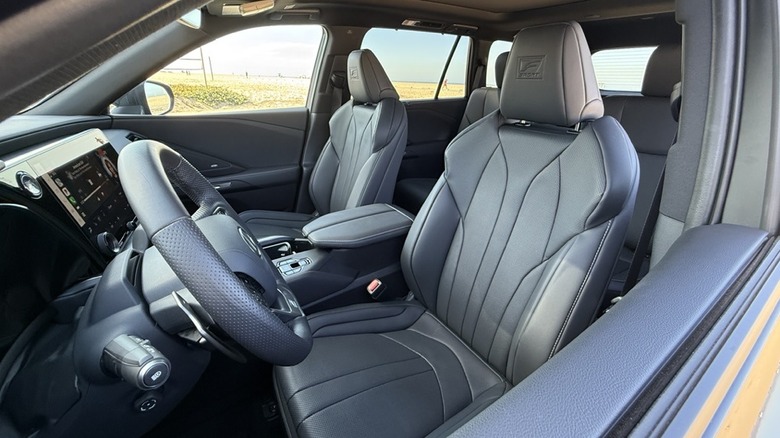
There are multiple powertrains available for both the RX and the TX, but they have the same power output on their base 350 trim levels: 275 hp and 317 lb-ft of torque. The TX gets that power via a 2.4-liter turbocharged four-cylinder engine, and it certainly felt adequate during my time behind the wheel. But for a bit more power and significantly better fuel economy, you can also opt for the TX 500h or the TX 550h+.
The standard TX 350 gets an EPA-estimated 23 mpg combined (21 city/27 highway), but the hybrid bumps up that estimate to 27 mpg combined -- putting it amongst the most fuel-efficient Lexus models in the company's lineup. It gets there via the same four-cylinder engine, just with the assistance of Lexus' Parallel Hybrid system. This pushes the power levels to 366 hp and 406 lb-ft of torque. At the top of the pecking order is the plug-in hybrid variant, the 550h+. It's powered by a 3.5-liter V6 and a plug-in hybrid system delivering a combined output of 404 hp. According to the EPA, it will go 33 miles on a single charge and will still return 29 mpg combined when the electricity runs out. Not bad for a spacious three-row SUV.
Want the latest in tech and auto trends? Subscribe to our free newsletter for the latest headlines, expert guides, and how-to tips, one email at a time.
Read the original article on SlashGear.
